Kinetico makes some of the highest-quality, most varied water softeners on the market, but they’re still machines at the end of the day. And like all other machines, water softeners are susceptible to their own set of problems.
If you’re a new kinetico water softener owner, we’ll take you through some of the most common problems you’ll likely encounter and how to solve them.
Before we get started, we should point out that some issues can only be solved by a professional, so we’ll let you know what issue you can fix by yourself and when you’ll need to seek professional help.
The most common kinetico water softener problems:
- Kinetico water softener not working
- Kinetico water softener not using salt
- Kinetico water softener brine tank blocked
- Kinetico water softener not regenerating automatically
- Kinetico water softener constantly draining
- Kinetico water softener producing hard water
Kinetico Water Softener Not Working
Kinetico water softener not working (turning on) is often due to a faulty power cable not sending electricity to the system. Check that all of the cables are connected, check that they’re all intact, make sure that a breaker isn’t down, and check to see if something didn’t short-circuit.
If the problem isn’t electric, then it’s probably the motor. This can be caused by a number of different things, like a dislodged mechanism, a cog getting several teeth broken, or other mechanical issues. You can’t fix the motor by yourself, so the best idea is to either call a plumber that knows how to fix water softeners or call Kinetico themselves for assistance.
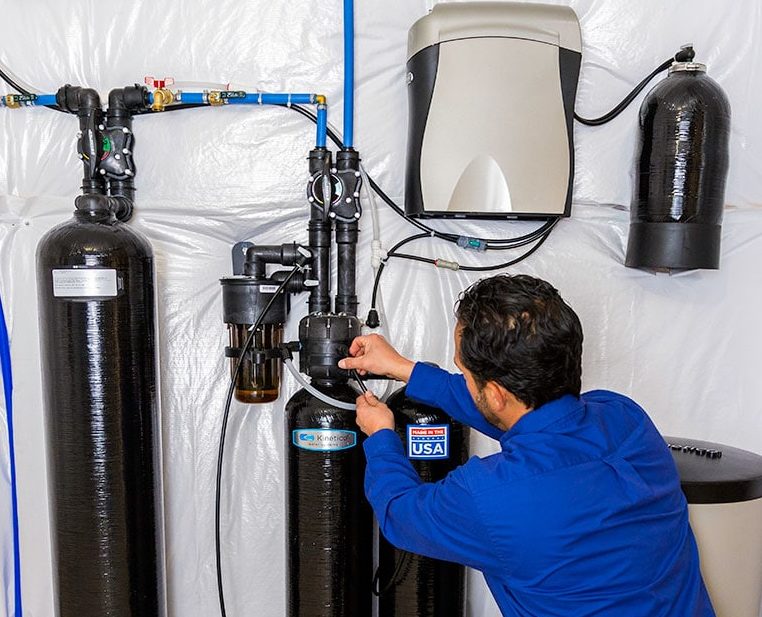
There are motor issues that can easily be solved if the problem is just a broken component that needs to be replaced, but if several components have failed, then a complete motor replacement is usually necessary.
Luckily, some Kinetico water softener models come with either a 10-year warranty on items like the filtration media, the ion exchange resin, and the by-pass valves or at least a 5-year warranty on most parts. Always check to see what the warranty of your product covers before you take action.
Related article: How to know if water softener is working
Kinetico Water Softener Not Using Salt
The water softener regeneration process requires the salt tank to get filled with water to create the brine that is then taken into the main tank to help replenish the beads and charge them back up with sodium molecules.
Kinetico water softener not using salt most likely indicates that the system is clogged. The issue can be two-fold; Either the hose that takes the water into the salt tank has gotten clogged, or the float at the bottom of the tank that’s meant to take in the collected brine isn’t working properly.
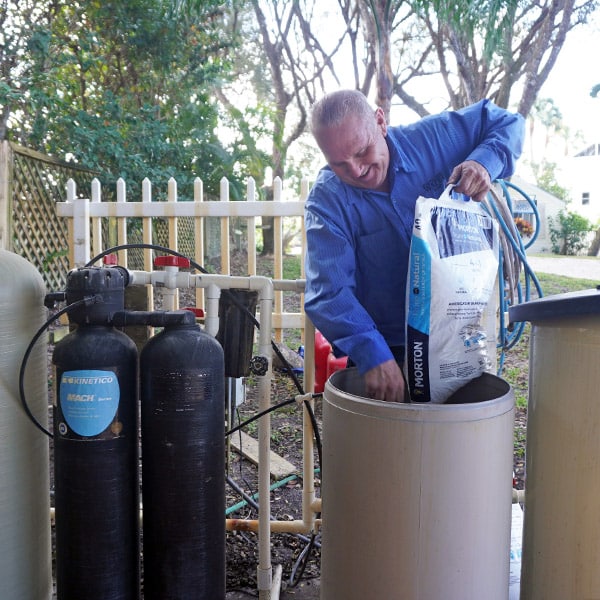
This issue is remarkably easy to fix, and all you really need to do is take off the hose and wash it out to clear any potential blockage. As for the float valve, you’ll want to run a quick visual inspection and check to see that the entry point isn’t crystallized and blocked due to the salt.
If you see some crystallization on the bottom, then the easiest way to get rid of it is to remove the float from the brine tank, disconnect the hose, and put the float in a bucket of hot water. The water will naturally break down the crystals, and all you need to do is rinse out the valve, connect it back to the main tank, and put it back in the brine tank.
Kinetico Water Softener Brine Tank Blocked
Kinetico water softener brine tank blockage often indicates the formation of a salt bridge.
A salt bridge is formed over time after the salt is continuously washed in the water to create the brine. The leftover wet salt crystallizes over time and started to stick together, forming a salt crust in the brine tank.
This salt crust or salt bridge prevents water from getting to the un-crystallized salt near the bottom and prevents the brine from forming.
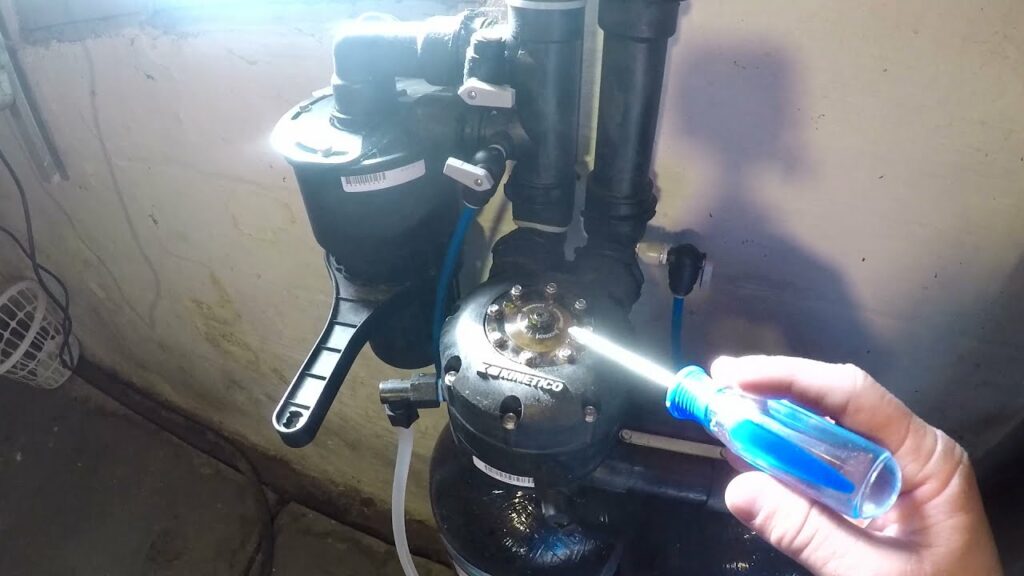
It’s incredibly easy to identify whether your brine tank has a salt bridge or not just by opening the top and checking to see if the salt has crusted together. The solution is even easier, since all you need to do is get something like a small hammer or anything that you can use to hit the salt and break it apart again so that the water can pass through.
Just be careful not to use too much force. It doesn’t take a lot of strength to break the salt bridge and if you’re too heavy-handed, you might accidentally damage the tank.
Keep in mind that the salt can also crystalize on the bottom, which creates something called salt mush. This mush is no longer usable, so the best thing to do is to get rid of it.
Take out the top layer of salt that can still be used and place it in a bucket or another container. Then remove the salt mush and throw it away, remove the float and the cylinder that it’s housed in, rinse out the tank, and finally, put all of the components and the salt back into the tank.
Kinetico Water Softener Not Regenerating Automatically
Kinetico water softener not regenerating automatically often indicates a problem with the valves and hoses OR regeneration timer not properly set.
The regeneration process in a water softener can occur in one of two ways. The first is by way of a timer that will start the process once the internal clock gets to the time that the owner has set it to. The second way is if a set gallon limit has passed through the main tank and the water softener registers that it needs to replenish the beads before it can process any more hard water.
Regardless of which type of water softener you have, the regeneration process should happen automatically, and if it doesn’t, then there’s a good chance of a problem with the valves or the hoses.
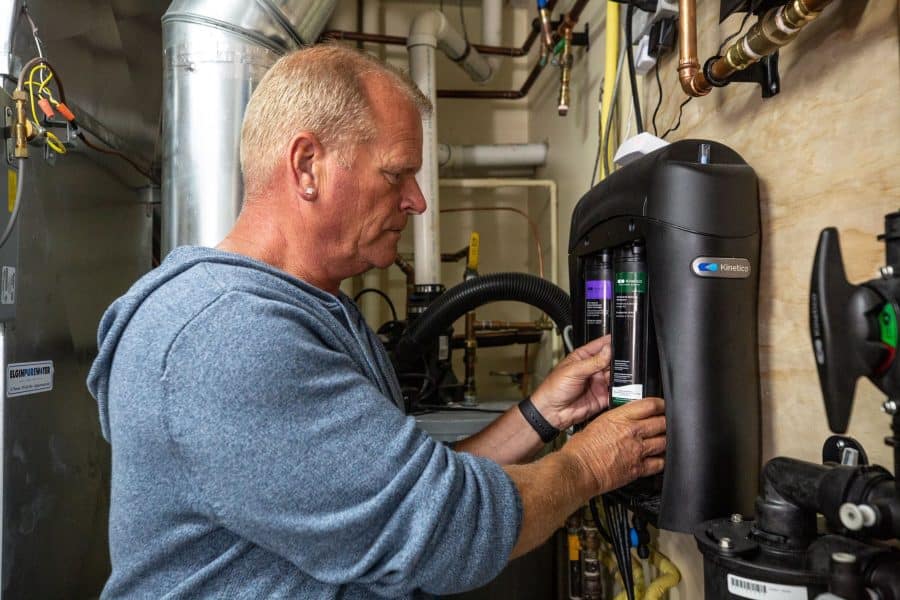
All you need to do is detach the connectors that lead from the main tank into the brine tank and vise-versa and check if there’s anything blocking the passages. Wash out the hoses to make sure that they’re clear, and check to see if there’s any mineral buildup around the float at the bottom that might be blocking the water from passing through.
An issue with the regeneration process can also be caused by the internal computer. Ensure that your regeneration timer is properly set and that it wasn’t reset for any reason. Reset the regeneration timer and let the process run through at least once and see if anything changes.
If you’ve reset the timer, or if your regeneration process only activates after a certain amount of water has passed through the tank, then there might be a bigger issue with your water softener computer. In this case, the best thing to do is to call in a professional.
Kinetico Water Softener Constantly Draining
The only real reason why the kinetico water softener would constantly be draining is due to the regeneration process.
First of all, it’s not normal for the water to constantly be draining without stopping. If this draining lasts for more than 4 hours, then that means that something might be wrong with the intake valves or the system itself, and you may want to call a professional.
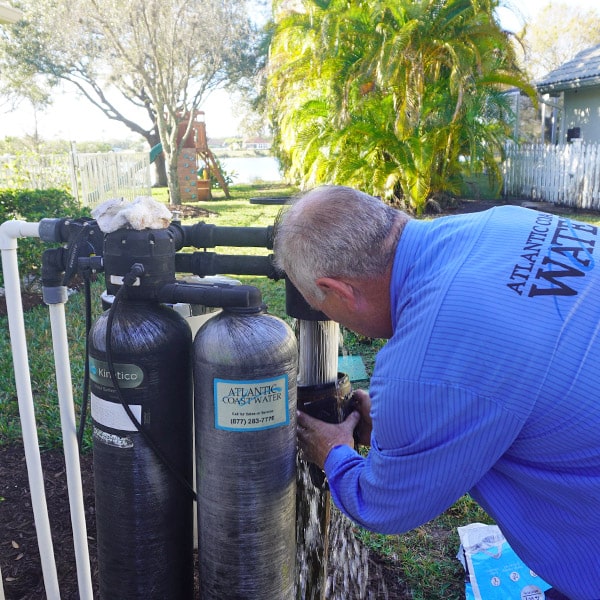
However, since the regeneration process usually lasts for around 2 – 3 hours, what you’re hearing might just be the salt tank filling with water and then that collected brine passing through the main tank. There are also rinse cycles at the start and the end of the regeneration process, so it’s normal for there to be water passing through the unit even when you’re not using the faucets.
As for how often the water regeneration process will activate, it depends on how much water you use. As we’ve already mentioned, some water softeners use a timer that activates the regeneration at a certain time every day, while others measure the amount of water that’s passed through and start the regeneration once a set gallon limit has been reached in order to refresh the beads inside the main tank.
Households that use a lot of water will naturally hear the regeneration process start up a lot more frequently. Additionally, if you’re concerned that the water is draining due to a leak in the pipes or the hoses somewhere, there would be a clear puddle on the ground if that were the case, so it would be an easy issue to identify and fix.
Kinetico Water Softener Still Produces Hard Water
Kinetico water softener producing hard water most likely indicates a faulty water softener resin that needs immediate replacement.
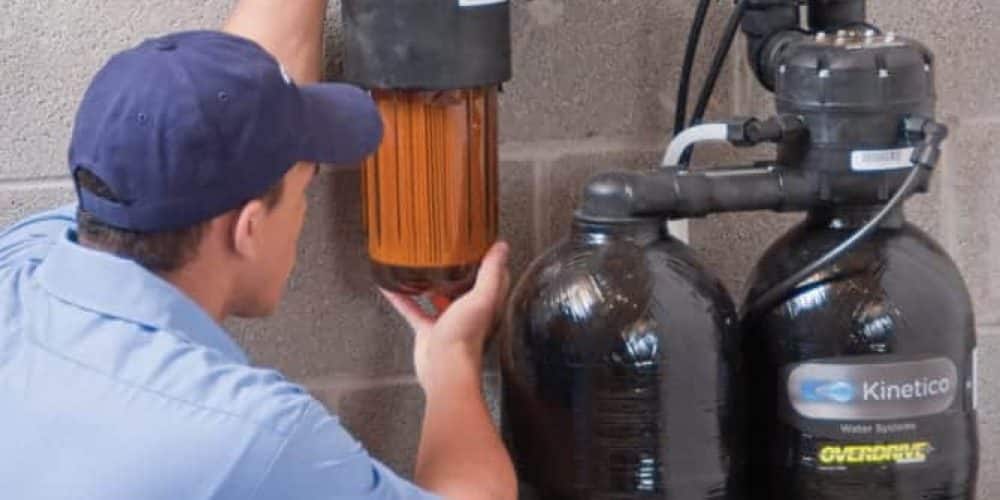
Water softeners can last you for many years and maybe even several decades, if you know how to maintain them. However, the same cannot be said about the resin inside.
This resin is responsible for replacing the calcium and magnesium molecules in the hard water and softening it in the process. It does this by replacing the aforementioned molecules with sodium molecules. This replacement can only keep happening if the salt in the brine tank keeps replenishing the sodium molecules in the resin through the regeneration process.
The regeneration can keep the resin charged up with sodium molecules for a very long time, but it’s not permanent. The exact lifetime of the resin depends on the amount of hard water that’s been processed and the number of regeneration cycles it’s been through. You should realistically see at least 3-5 years of use out of the resin unless you live in a household that uses a lot of water, in which case the more realistic timeframe is around 2-3 years.
The good news is that resin isn’t all that expensive, and replacing it is not hard. The bad news is that this is a lengthy process, so we’d suggest getting a qualified plumber or Kinetico repairman to do it for you.
Conclusion
Most of the issues that you’ll likely experience when owning a Kinetico water softener come from clogged pipes and valves. These are luckily very easy to fix if you simply run a bit of water through them and make sure that you scrub off any mineral buildup that might have accumulated.
The brine tank may also cause some issues due to crystallization or the regeneration process itself. If this is the case, all you have to do is break up any salt bridges, clean out and rinse off any salt mush, and put the floater in some hot water to get rid of any crystals that might be blocking the intake valve.
As for the regeneration process, if the issue isn’t in the water hoses or the electric cables, then it’s probably in the computer itself. Computer and motor issues will only become worse if an inexperienced hand tries to fix them and fails, so for these in particular, it’s best to call a professional.
I have a 6 month old Kinetico WS. A few times now I’ve had salty water in the house. After the second time, I had a Kinetico service rep work on the system. They found a grease pack blocking the filter that wasn’t properly removed during installation. The system worked normally for 3 weeks. Now a third time, salty water.
My previous system (23 yrs in a previous system/old house) never had this problem.